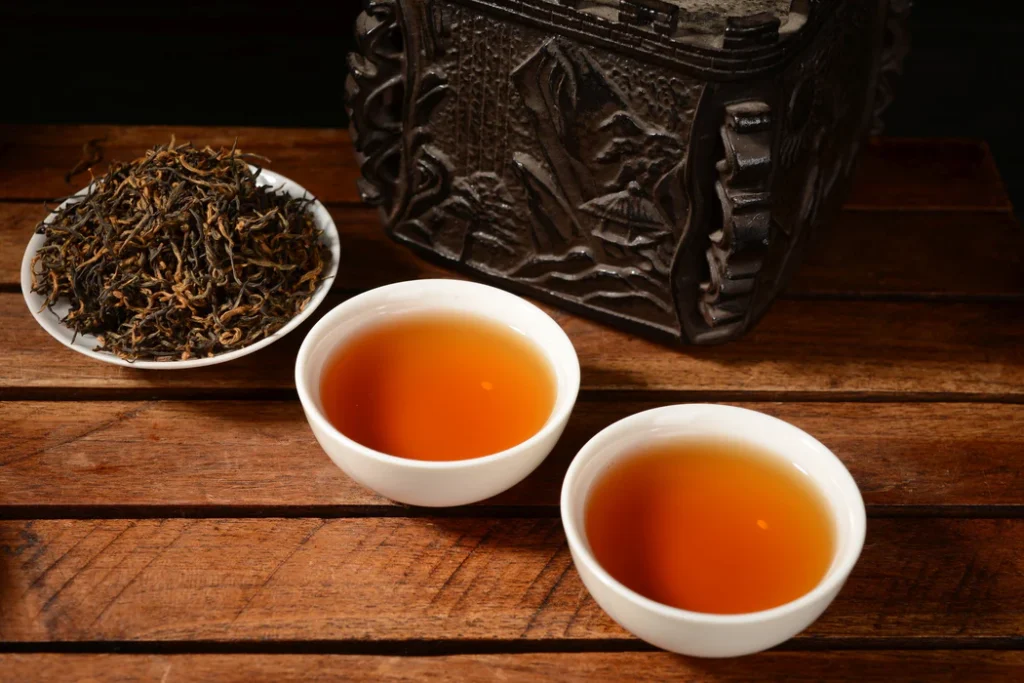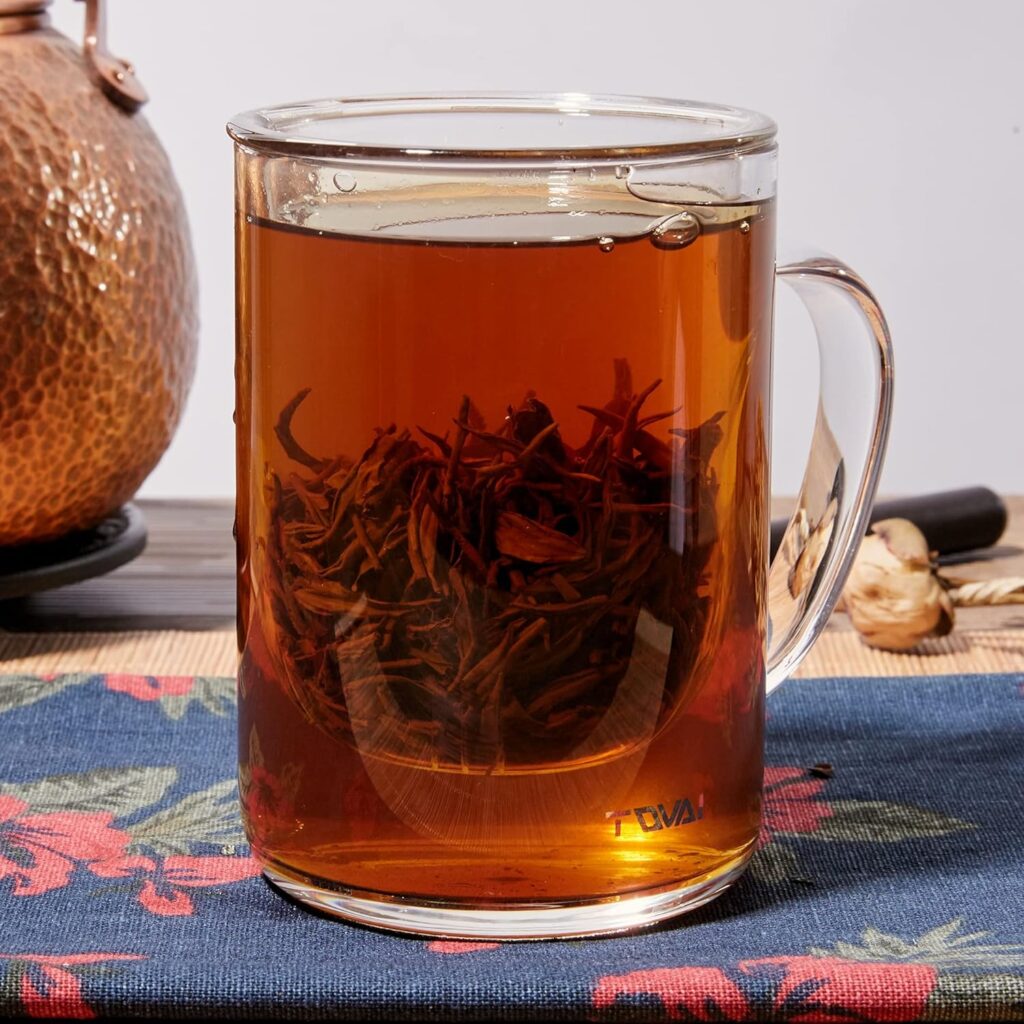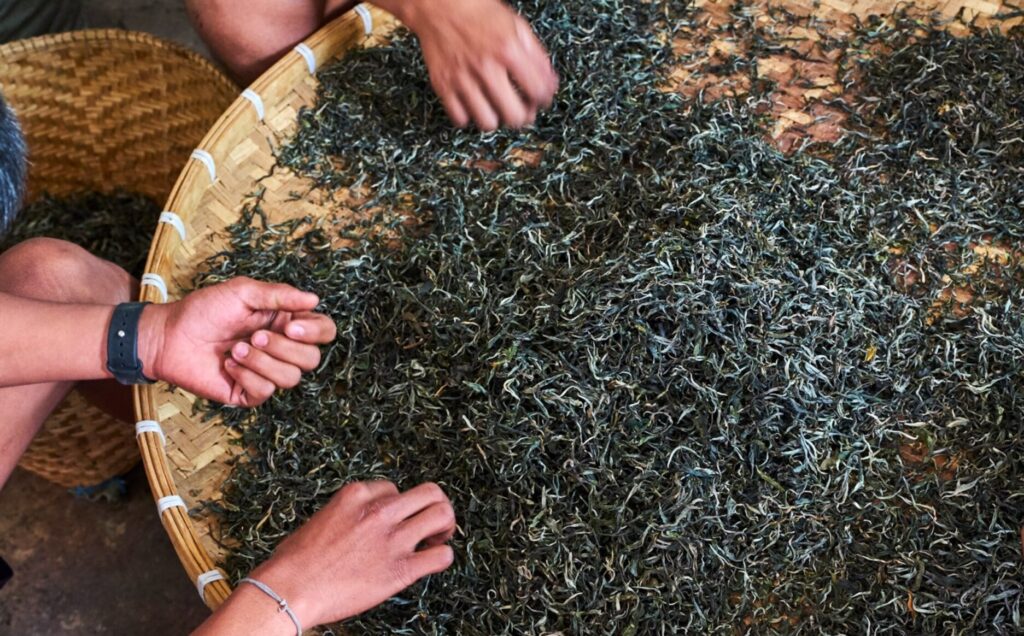As someone who has spent countless hours immersed in the world of tea, I can confidently say that no beverage is more intrinsically woven into the fabric of Chinese culture than traditional Chinese tea. This humble yet extraordinary elixir has transcended its role as a mere drink, becoming an enduring symbol of China’s rich heritage, a thread that connects the nation’s past, present, and future.
Introduction to The Traditional Chinese Tea
From the misty peaks of sacred mountains to the bustling streets of modern cities, the aroma of traditional Chinese tea permeates the air, evoking a sense of timelessness and reverence. Its origins can be traced back thousands of years, to a time when the ancient Chinese first discovered the alluring properties of the Camellia sinensis plant.
Throughout the centuries, the cultivation, production, and appreciation of tea have evolved into an art form, a testament to the ingenuity and dedication of generations of tea masters. Each meticulously crafted cup holds within it a tapestry of flavors, aromas, and traditions that have withstood the test of time. As one delves deeper into the world of traditional Chinese tea, one is struck by the sheer diversity of varieties, each with its own unique character and story to tell. From the vibrant green teas that grace the slopes of Zhejiang to the rich, robust black teas of Yunnan, these leaves offer a journey through the vast and varied landscapes of China.
Yet, beyond the sheer enjoyment of savoring these exquisite teas, there lies a deeper connection, a connection to the cultural heritage, the philosophical teachings, and the artistic expressions that have been intertwined with tea for millennia. Each sip is a gateway to understanding the soul of a nation that has long revered this humble yet extraordinary beverage. So, whether you are a seasoned tea connoisseur or a curious newcomer, join me on this captivating journey as we explore the most traditional and revered teas of China, and unravel the tapestry of history, culture, and artistry that they embody.
Origins of Tea in China
Legendary Birth of Tea
The origins of traditional Chinese tea are shrouded in legend and folklore, adding to the mystique and allure of this ancient beverage. One of the most enduring tales tells of the mythical Emperor Shennong, known as the “Divine Farmer,” who is said to have discovered tea’s invigorating properties quite by chance.
As the story goes, Shennong was a ruler deeply versed in the study of agriculture and herbal medicine. One fateful day, while resting beneath a Camellia sinensis tree, a few leaves drifted into his pot of boiling water, instantly imbuing it with a captivating aroma and a refreshing taste. Thus, the world’s first cup of tea was born, igniting a tradition that would endure for thousands of years.
While the veracity of this legend is debated, it speaks to the reverence and almost mythical status that tea holds within Chinese culture. As someone who has spent countless hours exploring the rich tapestry of tea’s history, I am continuously drawn to these ancient tales, which serve as a reminder of the beverage’s deep-rooted place in the Chinese psyche.
Early Tea Cultivation and Production
Beyond the realm of legend, the earliest documented evidence of tea cultivation and production in China dates back to the 3rd century BCE, during the Western Han Dynasty. It was during this era that tea transitioned from a wild-harvested herb to a cultivated crop, with the first dedicated tea plantations emerging in the regions of Sichuan and Yunnan.
As tea’s popularity spread throughout the empire, so too did the techniques for its cultivation and processing. Early tea growers and producers developed intricate methods for plucking, withering, rolling, and drying the leaves, laying the foundation for the diverse array of traditional Chinese tea varieties we know today. It is a testament to the ingenuity and dedication of these early pioneers that their methods have endured and been refined over the centuries, passed down from generation to generation, ensuring the preservation of tea’s rich cultural heritage.
Significance in Chinese Culture and Traditions
From its humble beginnings as a medicinal herb, tea quickly wove its way into the very fabric of Chinese culture and society, becoming an integral part of daily life, rituals, and traditions. In the imperial courts of ancient China, tea ceremonies were elevated to an art form, with elaborate rituals and etiquette surrounding the preparation and consumption of this revered beverage.
Beyond the realm of the elite, tea also held a significant place in the lives of commoners, becoming a symbol of hospitality, friendship, and social cohesion. The simple act of sharing a pot of tea forged bonds and facilitated the exchange of ideas, wisdom, and stories. As someone who has spent countless hours studying the rich cultural tapestry surrounding traditional Chinese tea, I am continuously in awe of the depth and breadth of its significance. From the philosophical teachings of ancient scholars to the intricate artistry of tea-inspired ceramics and calligraphy, tea has left an indelible mark on every aspect of Chinese culture, a testament to its enduring legacy and the profound respect it commands.
Defining “Traditional” Chinese Tea
As someone who has immersed themselves in the world of traditional Chinese tea, I often find myself pondering the very definition of what constitutes “traditional” in this context. It is a term that carries weight and significance, denoting a connection to the ancient roots and authentic practices that have shaped this revered beverage for generations.
Criteria for Tradition and Authenticity
When it comes to defining traditional Chinese tea, several criteria emerge as essential markers of authenticity. Firstly, there is the matter of lineage, a direct link to the time-honored cultivation, processing, and preparation methods that have been passed down through the centuries. These techniques, honed and refined over generations, are the very foundation upon which the diverse array of traditional tea varieties are built.
Equally important is the concept of terroir – the unique combination of soil, climate, and environmental factors that imbue each tea with its distinct character and flavor profile. Traditional teas are inextricably tied to their places of origin, with the skilled artisans and tea masters drawing upon the local conditions and resources to craft their masterpieces.
As someone who has had the privilege of visiting tea gardens and production facilities across China, I have witnessed firsthand the reverence and dedication with which these traditions are upheld. From the meticulous plucking of leaves to the intricate firing and finishing processes, each step is carried out with a deep respect for the heritage and legacy of these teas.
Geographical Indications and Protected Origins
In recognition of the importance of preserving the authenticity and integrity of traditional Chinese teas, the Chinese government has established a system of geographical indications and protected origins. These designations serve to safeguard the reputation and quality of certain iconic tea varieties, ensuring that only those produced within specific regions and adhering to strict guidelines can bear the coveted appellations. For example, the renowned Longjing (Dragon Well) green tea can only be considered authentic if it is grown and processed within the designated areas of Hangzhou, Zhejiang province, following the precise methods that have been handed down for centuries. Similarly, the revered Tieguanyin oolong tea must hail from the misty slopes of Anxi County in Fujian province to bear its esteemed name.
Types of Traditional Chinese Teas
As a tea enthusiast, I am constantly in awe of the sheer diversity and depth of flavors that the traditional Chinese tea varieties offer. Each sip is a journey through the vast and varied landscapes of China, unveiling a tapestry of aromas, textures, and nuances that have been carefully cultivated and refined over centuries.
Green Teas
1. Longjing (Dragon Well)
Among the revered green teas of China, few can match the iconic status of Longjing, also known as Dragon Well. Hailing from the misty gardens of Hangzhou’s Xihu (West Lake) region, this tea is a true masterpiece, celebrated for its delicate, vegetal aroma and sweet, chestnut-like flavor. As someone who has had the privilege of savoring authentic Longjing, I can attest to the artistry and skill required in its production. The slender, flat leaves are meticulously hand-picked and pan-fired to perfection, preserving their vibrant green hue and delicate flavors.
2. Biluochun
Another gem among Chinese green teas is Biluochun, or “Green Spiral Spring.” Originating from the rolling hills of Jiangsu province, this tea is renowned for its distinctive shape – tightly rolled leaves resembling tiny spirals or snails. When brewed, Biluochun unfurls to reveal a delightfully complex aroma, with hints of fresh vegetation and a subtle, lingering sweetness. As a tea connoisseur, I find myself drawn to the gentle, refreshing nature of this tea, which perfectly captures the essence of spring.
Oolong Teas
1. Tieguanyin
In the realm of oolong teas, few varieties can match the storied history and revered status of Tieguanyin, or “Iron Goddess of Mercy.” This exceptional tea hails from the renowned Anxi County in Fujian province, where skilled artisans have perfected its production for generations. As someone who has explored the nuances of Tieguanyin, I am continuously captivated by its rich, floral aroma and its unique balance of fresh, fruity notes and a lingering, toasted finish. Each sip is a journey through the misty mountains and lush gardens where this tea is cultivated, a true testament to the art of oolong craftsmanship.
2. Dahongpao
Another oolong tea that holds a special place in Chinese tea culture is Dahongpao, or “Big Red Robe.” This rare and highly prized variety is said to have originated from a single bush nurtured by a devoted scholar in the Wuyi Mountains of Fujian. With its rich, woody aroma and complex, slightly smoky flavor profile, Dahongpao is a true delight for the senses. As someone who appreciates the intricacies of tea production, I am in awe of the skill and patience required to craft this exceptional oolong, with each batch undergoing a meticulous process of withering, rolling, and firing.
Black Teas
1. Lapsang Souchong
When it comes to traditional Chinese black teas, few varieties command attention quite like Lapsang Souchong. This iconic tea, hailing from the Wuyi Mountains of Fujian, is renowned for its distinctive smoky aroma and bold, robust flavor. As the legend goes, the origin of Lapsang Souchong was born out of necessity, when tea leaves were dried over pine fires during a military conflict. This accidental discovery resulted in a tea that is truly one-of-a-kind, with a rich, campfire-like aroma that instantly transports the senses.
2. Keemun
Another revered black tea variety is Keemun, which hails from the fertile hills of Anhui province. Often referred to as the “Burgundy of Chinese black teas,” Keemun is celebrated for its rich, slightly sweet aroma and its smooth, velvety flavor profile. As someone who appreciates the nuances of terroir, I am continuously drawn to the unique character of Keemun, which reflects the distinct soil and climate of its place of origin. Each sip unveils a complex tapestry of flavors, from hints of dark chocolate and honey to subtle notes of dried fruit.
Yellow Teas
1. Junshan Yinzhen
Among the rarest and most precious of traditional Chinese teas is Junshan Yinzhen, or “Cloud and Mist Pekoe.” This exquisite variety, produced in the misty mountains of Hunan province, is renowned for its delicate, downy buds and its subtle, refreshing flavor. As someone who has had the privilege of sampling authentic Junshan Yinzhen, I can attest to the artistry and skill required in its production. Each bud is meticulously hand-picked and carefully processed, undergoing a unique “yellow tea” oxidation process that imparts its distinct golden hue and delicate aroma.
2. Huoshan Huangya
Another celebrated yellow tea variety is Huoshan Huangya, or “Yellow Bud of Huoshan.” Originating from the iconic Huoshan (Burning Mountain) region of Anhui province, this tea is prized for its vibrant golden color and its delicate, nuanced flavor profile. As a tea enthusiast, I am continuously drawn to the subtleties and nuances of Huoshan Huangya, which offers a gentle, soothing experience with each sip. Its delicate aroma and smooth, mellow taste make it a true delight for those seeking a refined and sophisticated tea experience.
Whether you prefer the refreshing elegance of green teas, the complex depth of oolongs, the bold richness of black teas, or the rare and delicate nuances of yellow teas, the traditional Chinese tea varieties offer a world of flavors and aromas to explore and savor. Each sip is a journey through the rich tapestry of China’s tea culture, a testament to the artistry, dedication, and reverence that have shaped these exceptional beverages for centuries.
Cultural Significance and Traditions
From the ancient tea ceremonies that graced imperial courts to the regional traditions that have shaped local tea cultures, the significance of tea in China is a tapestry of rich, multifaceted heritage.
Tea Ceremonies and Gongfu Cha
One of the most iconic expressions of tea’s cultural significance in China is the time-honored tradition of tea ceremonies. Originating in the imperial courts of ancient dynasties, these elaborate rituals elevated the art of tea preparation and consumption to new heights, with each step imbued with symbolism and reverence.
As someone who has witnessed the grace and precision of a traditional tea ceremony, I can attest to the profound sense of tranquility and mindfulness it fosters. From the meticulous selection and preparation of the tea leaves to the carefully choreographed movements of the tea master, every aspect is a celebration of the centuries-old wisdom and artistry that have shaped this practice.
Closely related to the tea ceremony is the tradition of “Gongfu Cha,” a ritualized method of brewing tea that originated in the Fujian province. This intricate process involves the use of small, delicate teaware and a series of short, concentrated infusions, allowing the tea leaves to gradually unfurl and reveal their full depth of flavor and aroma. As a tea enthusiast, I find the art of Gongfu Cha to be a true exercise in mindfulness and appreciation, inviting the drinker to slow down, savor each nuance, and connect with the rich heritage that this practice represents.
Tea in Art, Literature, and Philosophy
The cultural significance of tea in China extends far beyond the realm of ceremony and ritual. Throughout the centuries, tea has been a muse for artists, writers, and philosophers, inspiring a wealth of artistic expression and philosophical thought.
From the intricate calligraphy adorning tea caddies and tea bowls to the exquisite glazes and shapes of tea ceramics, the influence of tea can be seen in countless works of art. As someone who appreciates the intersection of beauty and tradition, I am continuously in awe of the skill and dedication required to create these masterpieces, each one a tribute to the enduring legacy of Chinese tea culture.
In the realm of literature, tea has been the subject of countless poems, essays, and philosophical musings, with scholars and writers exploring its symbolic significance, its connection to nature, and its ability to inspire contemplation and introspection.
Regional Variations and Local Traditions
While traditional Chinese teas share a common thread of history and reverence, each region of this vast and diverse nation has developed its own unique tea traditions and local customs. In the misty mountains of Fujian, for example, the art of oolong tea production has been honed to perfection, with local tea masters passing down their intricate techniques from generation to generation. Meanwhile, in the rolling hills of Zhejiang, the delicate green teas like Longjing and Biluochun are celebrated with their own distinct rituals and ceremonies.
As someone who has had the privilege of exploring these regional tea cultures, I am continuously in awe of the rich tapestry of traditions and the deep sense of pride and passion that each community holds for their local tea heritage. Whether it is the intricate tea ceremonies of Chaozhou, the vibrant tea markets of Yunnan, or the ancient tea horse trade routes that once traversed the Silk Road, each region of China offers its own unique window into the cultural significance of tea, reminding us of the enduring connections between this humble beverage and the diverse histories and traditions of the Chinese people.
Final Thoughts
As we reach the end of our journey through the captivating world of traditional Chinese teas, I find myself filled with a profound sense of reverence and appreciation for the rich tapestry of heritage, artistry, and cultural significance that these revered beverages embody.
From the legendary Longjing green tea, with its delicate, vegetal aroma and nuanced sweetness, to the celebrated Tieguanyin oolong, whose floral fragrance and layered flavors have captivated tea lovers for centuries, each sip is a connection to the ancient wisdom and traditions that have shaped the art of tea cultivation and production in China. The bold, smoky allure of Lapsang Souchong, the rich, velvety smoothness of Keemun black tea, and the rare, delicate elegance of Junshan Yinzhen yellow tea – each variety holds a unique place in the pantheon of traditional Chinese teas, a testament to the diverse landscapes, terroirs, and regional traditions that have nurtured their growth and evolution.
Yet, beyond the sheer enjoyment of savoring these exceptional teas, there lies a deeper significance – a connection to the cultural heritage, artistic expression, and philosophical musings that have been intertwined with tea for millennia. From the ancient tea ceremonies that graced imperial courts to the regional rituals and local customs that have endured through the ages, tea has woven itself into the very fabric of Chinese society, becoming an enduring symbol of tradition, hospitality, and the enduring human connection to nature.




















